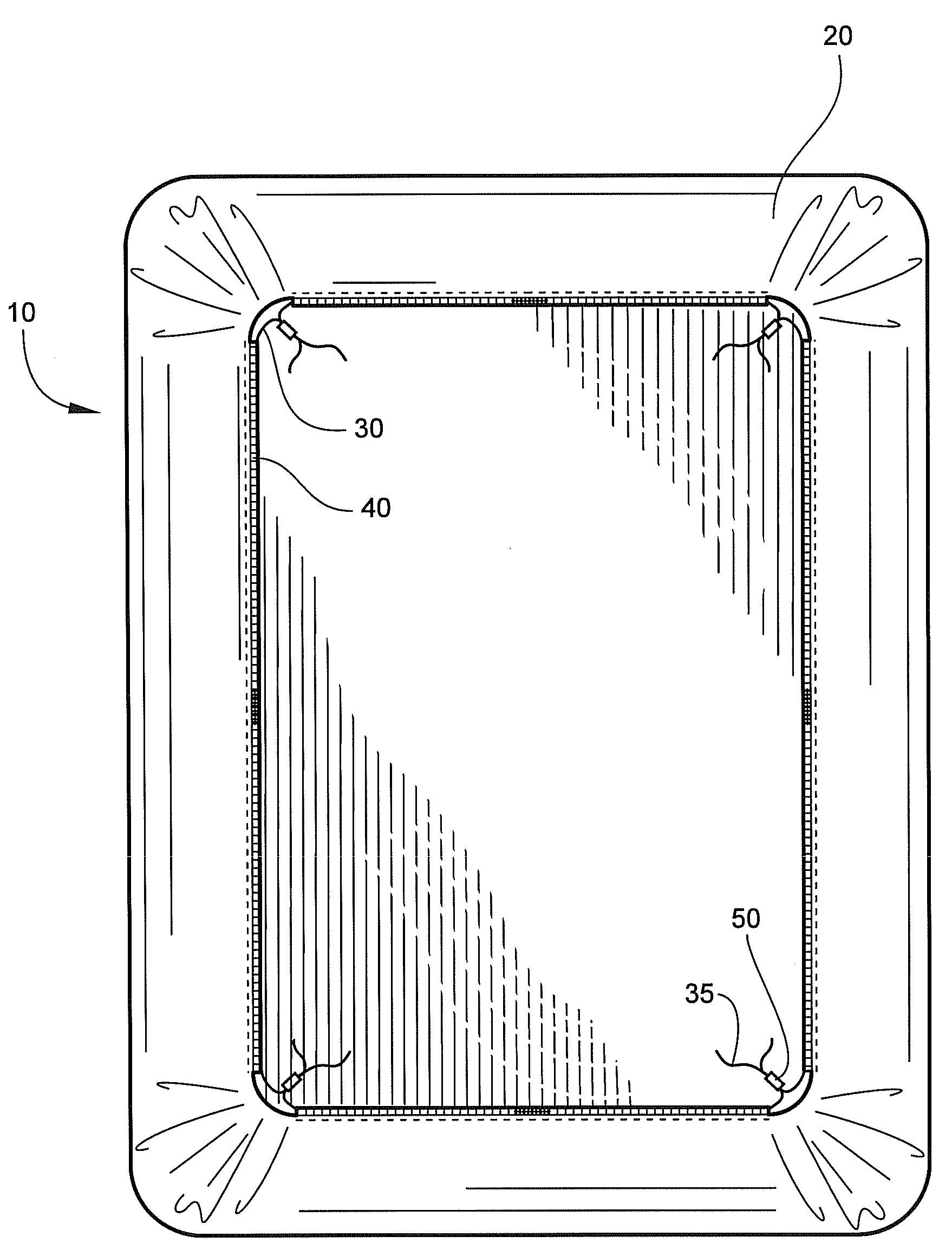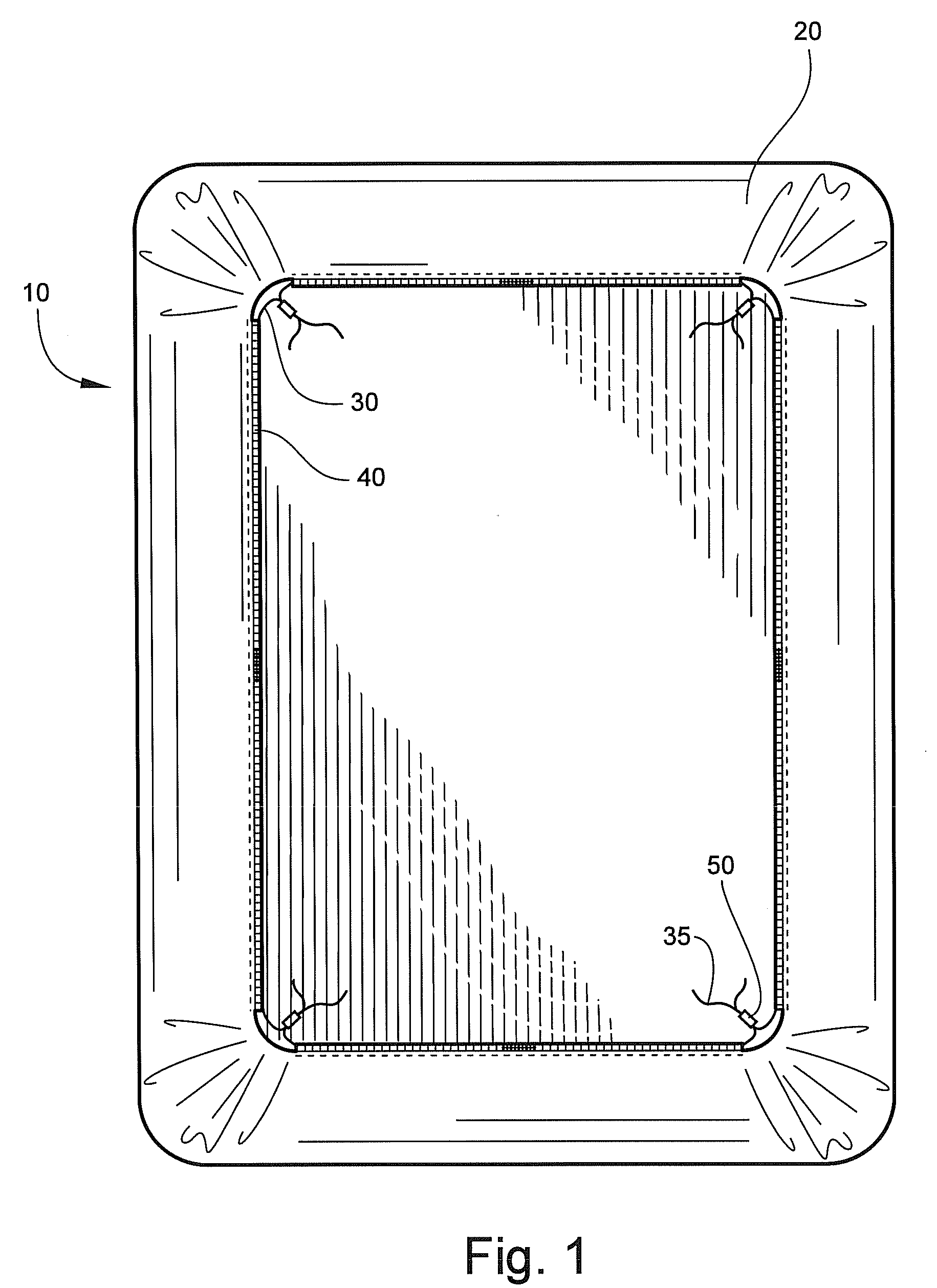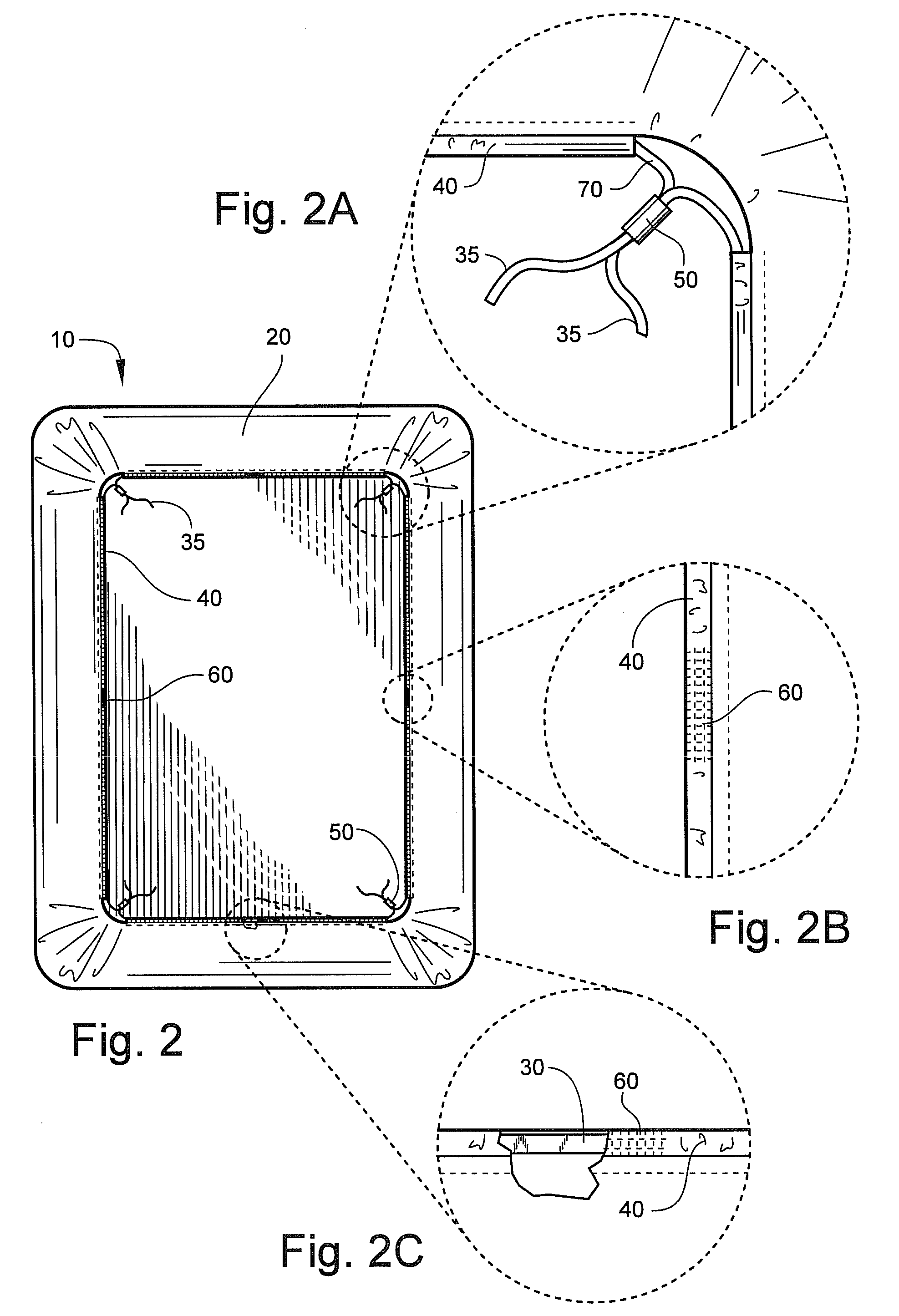Allergy barrier for bedding
a technology for allergens and bedding, applied in the field of allergen barrier for bedding, can solve the problems of increasing the presence of allergens from dust mites, affecting the removal of dust mites from materials, and exacerbated problems
- Summary
- Abstract
- Description
- Claims
- Application Information
AI Technical Summary
Benefits of technology
Problems solved by technology
Method used
Image
Examples
Embodiment Construction
[0021]An allergy barrier 10, FIG. 1, for bedding comprised of a sheet 20 adapted to fit a wide variety of mattress depths by enclosing a top, all sides, and a portion of the bottom of a mattress. A pull string 30, FIG. 2C, inserted within an outer hem 40 of the sheet where the pull string 30 is adapted to secure the sheet 20 to the mattress. The pull string 30 terminates outside of the outer hem 40 of the sheet 20, as shown in FIG. 2A. The sheet 20 is made of a material having a mean average pore size of less than ten (10) microns. This material is selected from the group of a microporous film, a tightly woven fabric, a nonwoven fabric, a non-porous fabric or a laminate of one or more of these types of fabrics.
[0022]This allergy barrier in one embodiment uses a sheet 20 having no exposed enclosure means on the top and all sides of the allergy barrier. The enclosure means consists of the group of: zippers, snaps, hook and loop type closure means, buttons, fasteners, connectors, latch...
PUM
 Login to View More
Login to View More Abstract
Description
Claims
Application Information
 Login to View More
Login to View More - R&D
- Intellectual Property
- Life Sciences
- Materials
- Tech Scout
- Unparalleled Data Quality
- Higher Quality Content
- 60% Fewer Hallucinations
Browse by: Latest US Patents, China's latest patents, Technical Efficacy Thesaurus, Application Domain, Technology Topic, Popular Technical Reports.
© 2025 PatSnap. All rights reserved.Legal|Privacy policy|Modern Slavery Act Transparency Statement|Sitemap|About US| Contact US: help@patsnap.com



